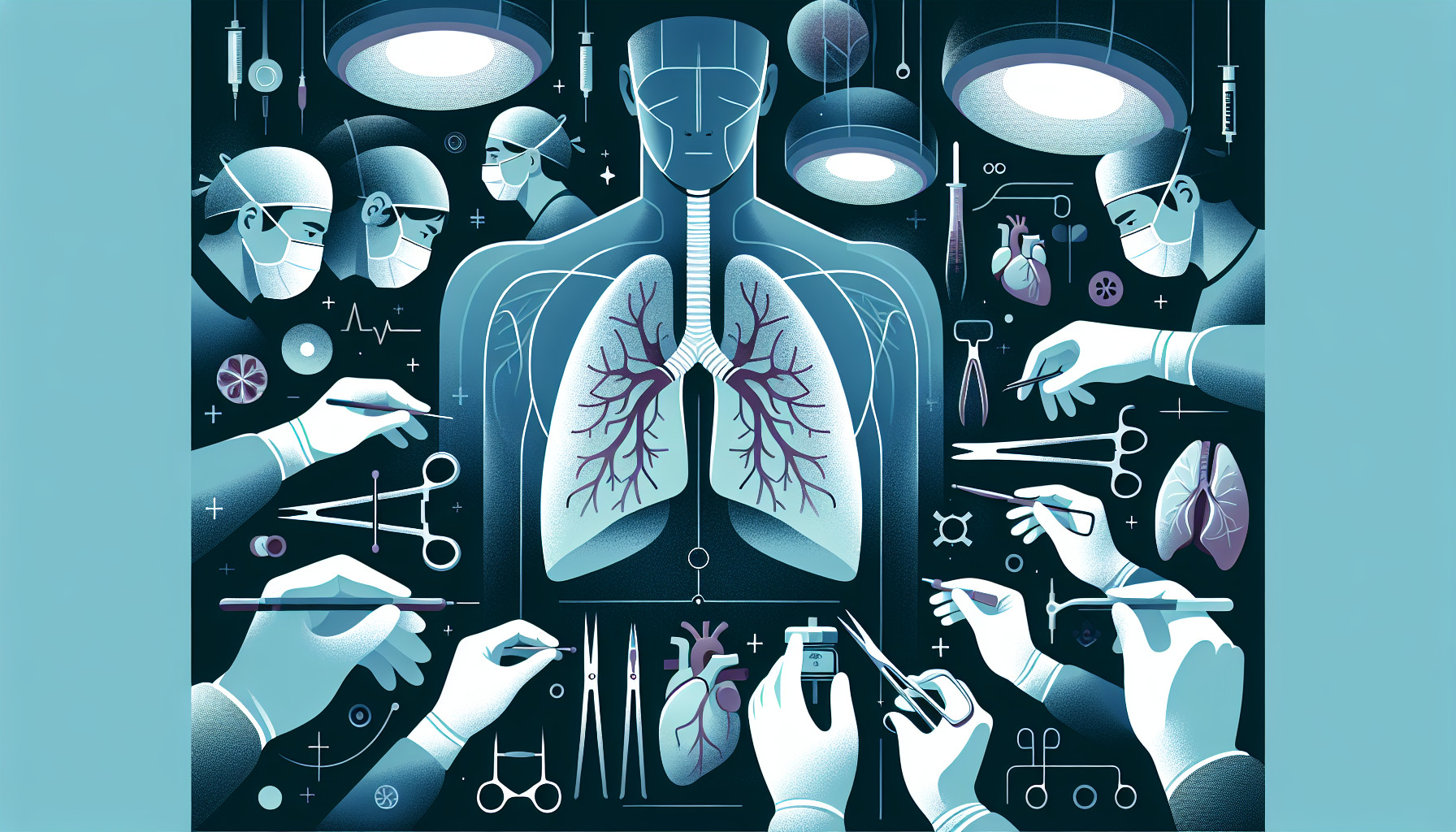Our Summary
This research paper is about a method called ex vivo lung perfusion (EVLP) which could help to increase the number of lungs available for transplantation. At present, there is a shortage of donated lungs suitable for transplant, leading to many patients dying while waiting for an organ. EVLP is a technique that can make previously unusable donor lungs suitable for transplant. Since the first successful lung transplant using EVLP was carried out in 2000, multiple clinical trials across the world have shown that this method can potentially increase the total number of lungs available for transplant.
FAQs
- What is ex vivo lung perfusion (EVLP) and how does it relate to lung transplantation?
- Why is there a shortage of donated lungs suitable for transplantation?
- How has the use of EVLP impacted the number of lungs available for transplantation since its first successful use in 2000?
Doctor’s Tip
One helpful tip a doctor might tell a patient about lung transplant is to stay active and maintain a healthy lifestyle before and after the transplant. Regular exercise and a nutritious diet can help improve lung function and overall health, making the recovery process smoother and increasing the chances of a successful transplant. It is important to follow the doctor’s recommendations for post-transplant care and attend all follow-up appointments to monitor progress and prevent complications.
Suitable For
Patients who are typically recommended for a lung transplant are those with end-stage lung diseases such as chronic obstructive pulmonary disease (COPD), cystic fibrosis, idiopathic pulmonary fibrosis, and pulmonary hypertension. These patients have severe symptoms that significantly impact their quality of life and are not responsive to other medical treatments. Lung transplant may be recommended for these patients as a last resort to improve their quality of life and potentially extend their lifespan.
Additionally, patients who have failed other treatments such as medications, oxygen therapy, and pulmonary rehabilitation may also be considered for a lung transplant. These patients may have a poor prognosis without transplantation and may benefit from the improved lung function that a transplant can provide.
It is important to note that not all patients with end-stage lung diseases are suitable candidates for a lung transplant. Patients must undergo a thorough evaluation process to determine if they are physically and psychologically able to undergo the transplant surgery and post-transplant care. Patients with significant comorbidities, such as heart disease or cancer, may not be considered suitable candidates for a lung transplant.
Overall, patients who are recommended for a lung transplant are those with end-stage lung diseases who have failed other treatments and have a good overall health status that would allow them to undergo the transplant surgery and post-transplant care.
Timeline
Before lung transplant:
- Patient is diagnosed with a severe lung disease that cannot be treated effectively with medication or other therapies.
- Patient undergoes a thorough evaluation by a transplant team to assess their suitability for a lung transplant.
- Patient is placed on the national transplant waiting list and waits for a suitable donor organ to become available.
- Once a donor organ is identified, the patient undergoes surgery to receive the new lung(s).
After lung transplant:
- Patient undergoes a period of recovery in the hospital, where they are closely monitored for any complications.
- Patient is discharged from the hospital and continues to recover at home, following a strict medication regimen to prevent rejection of the donor organ.
- Patient attends regular follow-up appointments with their transplant team to monitor their health and the function of the new lung.
- Patient gradually resumes normal activities and may experience improvements in their breathing and overall quality of life.
- Patient must continue with lifelong medical care and monitoring to ensure the success of the transplant and prevent complications.
What to Ask Your Doctor
- Can you explain how ex vivo lung perfusion (EVLP) works and how it can make previously unusable donor lungs suitable for transplant?
- What are the potential risks and benefits of undergoing a lung transplant using lungs that have been treated with EVLP?
- How successful has EVLP been in increasing the number of available donor lungs for transplant in clinical trials?
- Are there any specific criteria or conditions that make a patient a good candidate for a lung transplant using EVLP-treated lungs?
- How long does the EVLP process take, and how does it compare to traditional lung transplant procedures?
- What is the success rate of lung transplants using EVLP-treated lungs compared to traditional lung transplants?
- What is the recovery process like for patients who undergo a lung transplant using EVLP-treated lungs?
- Are there any potential long-term complications or risks associated with receiving a lung transplant using EVLP-treated lungs?
- How does the cost of a lung transplant using EVLP-treated lungs compare to traditional lung transplant procedures?
- Are there any ongoing research or developments in the field of EVLP that could further improve the success and availability of donor lungs for transplant?
Reference
Authors: D’Cunha HC, Rojas M. Journal: ASAIO J. 2018 Mar/Apr;64(2):135-139. doi: 10.1097/MAT.0000000000000650. PMID: 28857775
